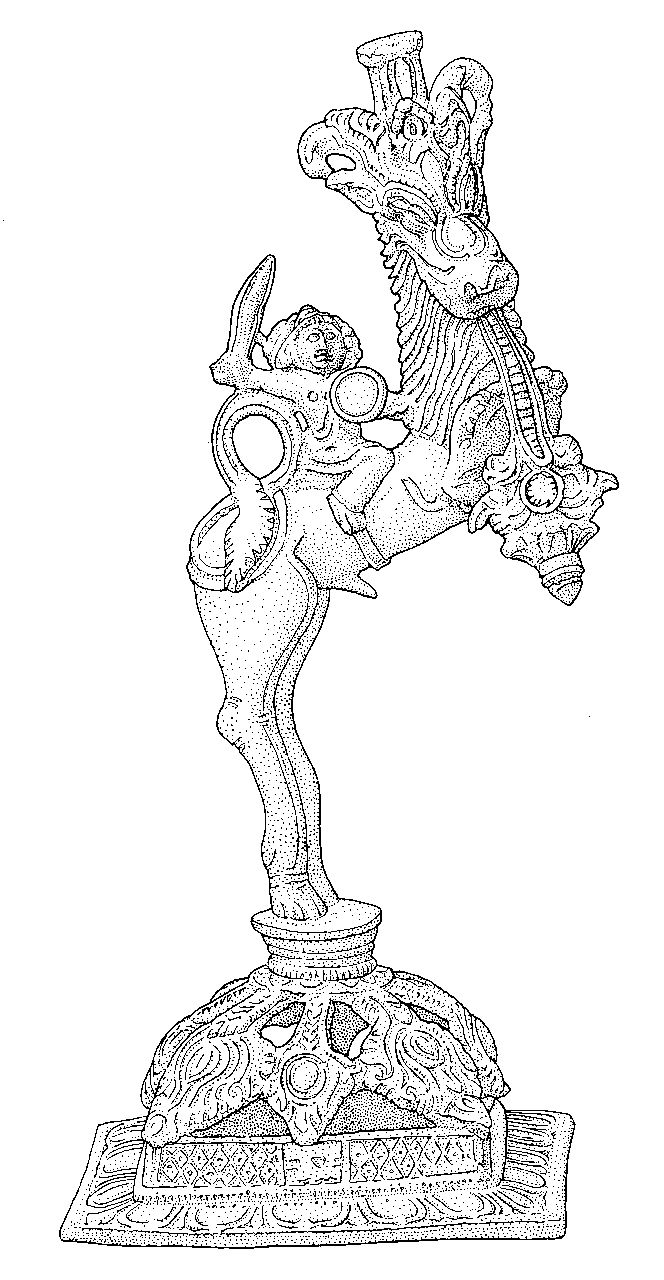
Adhara patra - Yali stand. Ritual temple equipment, Tranquebar c. 850-1270
As part of the Tranquebar Initiative (2004-2016) of the National Museum of Denmark, Dr Ramachandran Nagaswamy, former Commissioner of Archaeology in Tamil Nadu, worked in 2006 at the National Museum to describe and analyse this and other items from the Peter Anker collection from Tranquebar. Nagaswamy noted on this item (museum no. Da-172): "This is an ornamental stand with a prancing yali and a rider supporting four leaves like supporters to place may be the arghya patra. So it is a stand to hold the globular vessel. The stand is made clearly of brass. The animal generally called Yali is a mythical leo-griff with a lion! s body and face, but will have a trunk like that of an elephant. It is a common motif found in temples especially in the later Chola times 12th -13th cent. In the present specimen it has close resemblance to similar figures found in the royal temples of the Cholas at such known places like Darasuram and Tribhuvanam both near Kumbakonam in the Chola heartland. of 12th and 13th cent. The artistic importance given to the animal on hind legs shows that it was considered an important stand. The rider holds a sword and shield. The yali is turned to a side delightfully with floral ornaments issuing from its mouth. Its front legs are placed on the floral design. On the head of the Yali is four floral leaf like cups meant to support the vessel. The form of the Yali and the rider have the classicism and sophistication that is seen in stone sculptures in the temples of Kulottunga III as at Tribhuvanam circa 1225 CE. Judging from the associate finds and the inscribed temple ritual vessels it belongs to the 13th cent is certain. As this a stand to support stand it would come under Aadhara patra i.e stand."